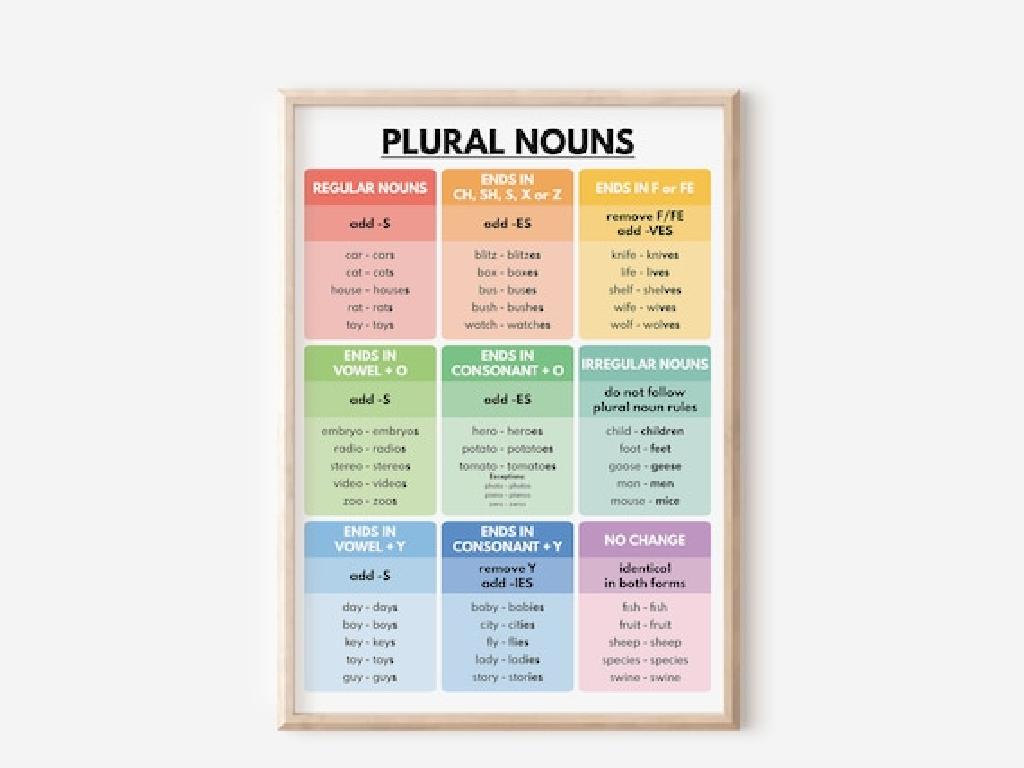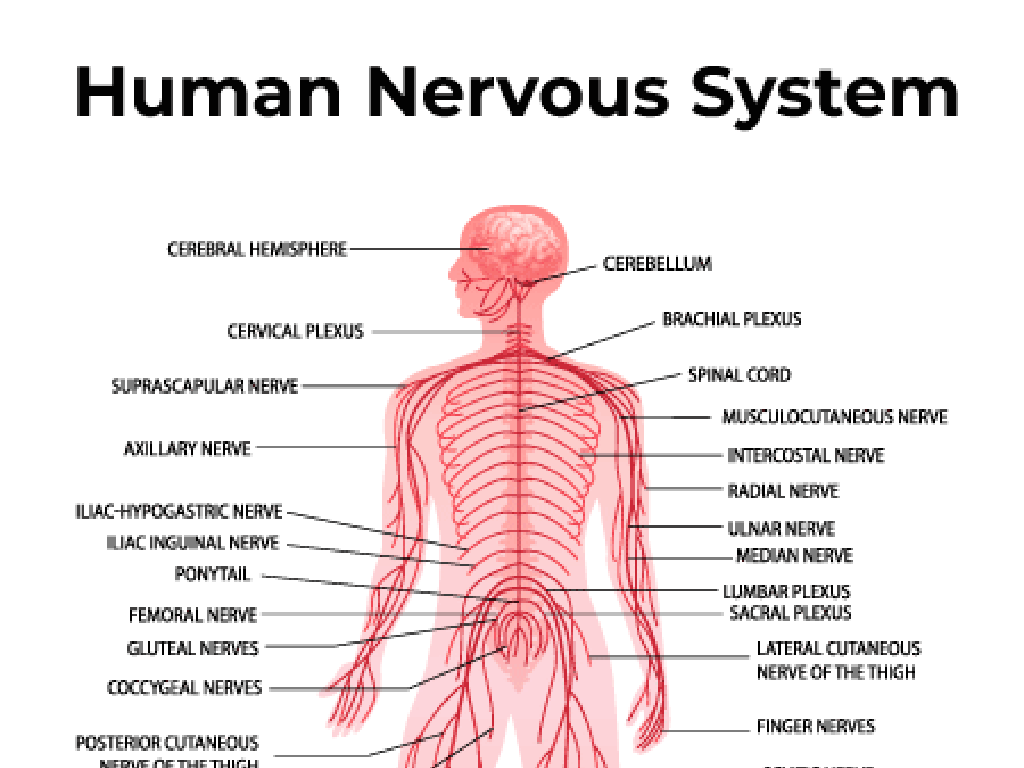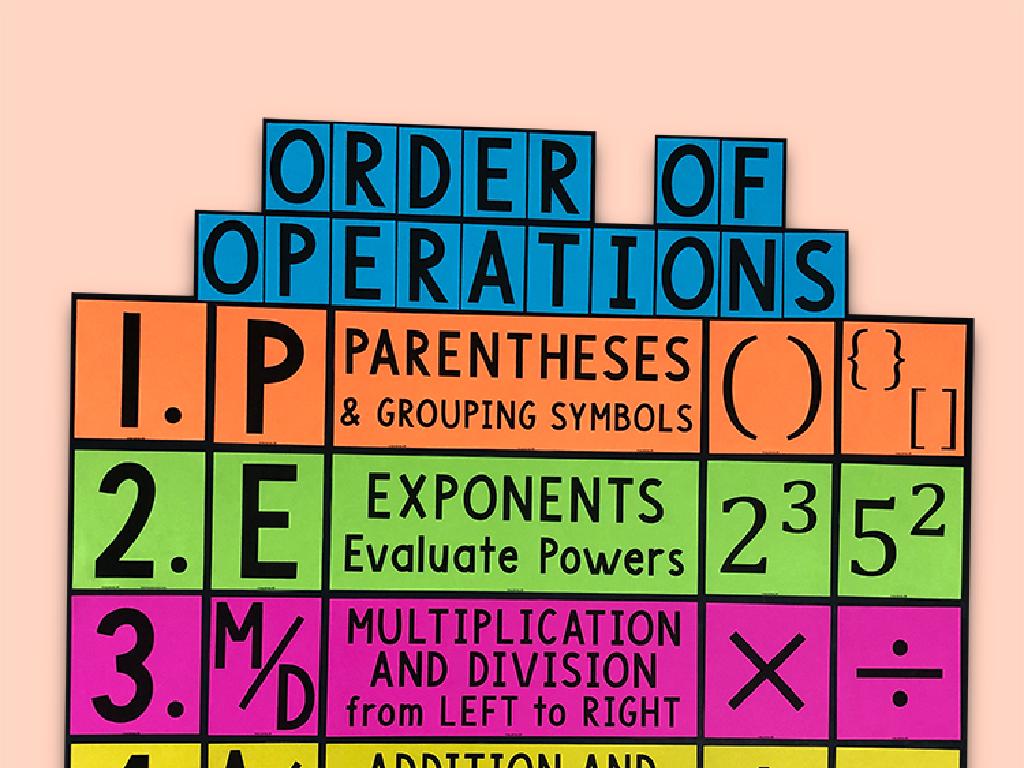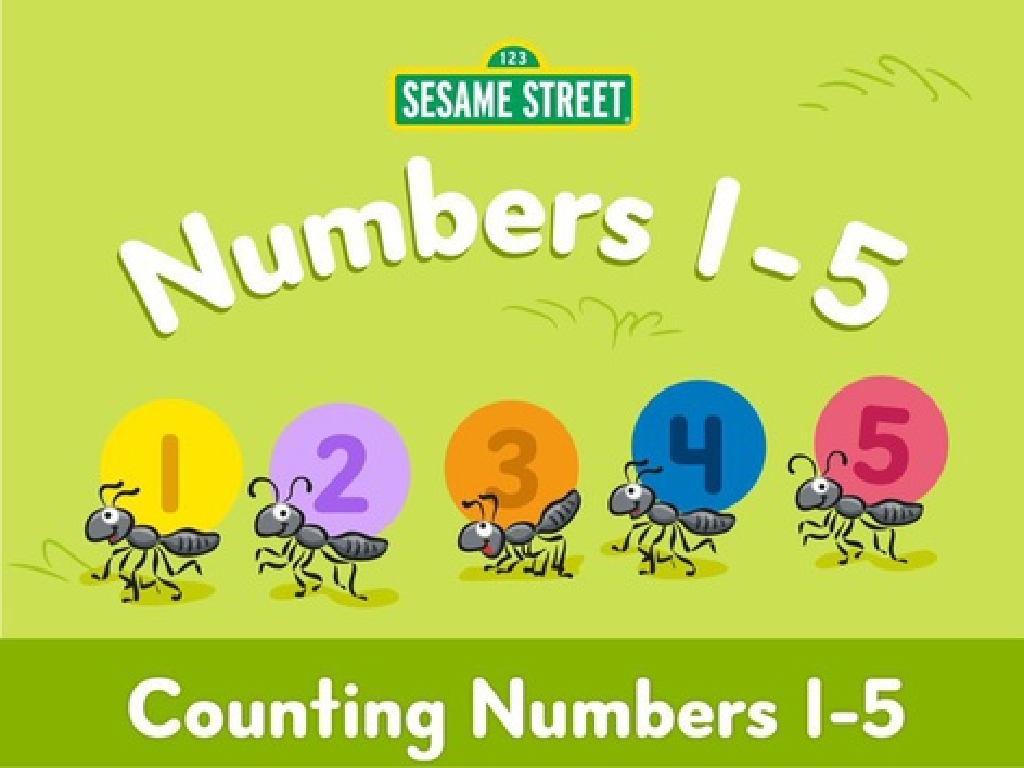Sort Elementary Substances And Compounds Using Chemical Formulas
Subject: Science
Grade: Sixth grade
Topic: Atoms And Molecules
Please LOG IN to download the presentation. Access is available to registered users only.
View More Content
Atoms and Molecules: The Tiny Building Blocks
– Atoms: The basic units
Atoms are the smallest particles of elements, like hydrogen (H).
– Molecules: Atoms join together
When atoms bond, they form molecules, like water (H2O).
– Chemical formulas represent substances
Formulas show the types and numbers of atoms, e.g., CO2 for carbon dioxide.
– Sorting substances by formulas
We can categorize substances by looking at their chemical formulas.
|
This slide introduces the fundamental concepts of atoms and molecules, which are the building blocks of all matter. Begin by explaining that atoms are the smallest unit of an element that retains its unique properties. Then, describe how atoms can bond with each other to form molecules, which are combinations of two or more atoms. Introduce chemical formulas as a way to represent these molecules and show the specific types and numbers of atoms involved. Finally, explain that by examining chemical formulas, we can sort different substances into categories, such as elements and compounds. Use examples like water (H2O) to illustrate molecules and carbon dioxide (CO2) to demonstrate a compound. Encourage students to think of other common substances and their chemical formulas.
Exploring Elements and the Periodic Table
– Define an element
– Simplest form of matter, cannot be broken down
– Common examples of elements
– Oxygen (O), Hydrogen (H), Gold (Au)
– Explore the Periodic Table
– A chart organizing all known elements
– Elements’ role in compounds
– Combine to form compounds with chemical formulas
|
This slide introduces the concept of elements as the building blocks of matter. An element is a substance that cannot be broken down into simpler substances by chemical means. Provide familiar examples like oxygen and hydrogen to help students relate. Introduce the Periodic Table as a tool for categorizing all known elements, explaining its layout briefly. Highlight how individual elements can combine to form compounds, which will be explored further in subsequent slides. Encourage students to start recognizing elements by their chemical symbols and understanding that these symbols are used to write chemical formulas for compounds.
Understanding Compounds
– Define a compound
– A substance made of two or more different atoms bonded together, e.g., H2O (water).
– Formation of compounds
– Atoms combine in specific ratios to form compounds, usually through chemical reactions.
– Common compound examples
– Water (H2O), Carbon Dioxide (CO2), and Sodium Chloride (NaCl) are all compounds.
|
This slide introduces the concept of compounds to the students. Begin with the definition, explaining that compounds are substances formed when two or more different types of atoms join together. Emphasize that these atoms are bonded chemically, not just mixed. Discuss how compounds are formed, typically through chemical reactions where atoms share or transfer electrons to achieve stability. Provide familiar examples like water, carbon dioxide, and table salt to illustrate the concept. Encourage students to think of other examples of compounds they encounter in daily life. This will help them understand the diversity and prevalence of compounds in their environment.
Understanding Chemical Formulas
– What’s a Chemical Formula?
– It’s a way to represent chemicals using symbols and numbers.
– Reading Chemical Formulas
– Symbols show elements, numbers show how many atoms.
– Writing Formulas: Elements
– Elements have a symbol, like O for Oxygen.
– Writing Formulas: Compounds
– Compounds combine symbols, like H2O for water.
|
This slide introduces the concept of chemical formulas to students, which are shorthand representations of substances in chemistry. Start by explaining that a chemical formula tells us the elements present in a substance and the ratio of atoms of each element. Emphasize that understanding how to read and write these formulas is crucial for identifying substances and predicting their behavior during chemical reactions. Provide examples of simple elements and their symbols, then show how these symbols are combined to form compounds, using subscripts to indicate the number of atoms. Encourage students to practice writing formulas for common elements and compounds to reinforce their learning.
Sorting Elements and Compounds
– Elements: Pure substances
– Simplest form of matter, cannot be broken down
– Compounds: Two or more elements
– Chemical combination, can be broken into simpler substances
– Activity: Identify and sort
– Use provided samples to distinguish between elements and compounds
– Understanding chemical formulas
|
This slide introduces the basic concepts of elements and compounds, setting the stage for a class sorting activity. Elements are pure substances that cannot be broken down into simpler substances by chemical means and are represented by chemical symbols. Compounds are made up of two or more elements chemically combined in fixed ratios, represented by chemical formulas. During the activity, students will use examples to identify whether a substance is an element or a compound and sort them accordingly. This hands-on experience will help solidify their understanding of the differences between elements and compounds. Provide clear examples of each and ensure students grasp the concept of chemical formulas as representations of these substances.
Chemical Formula Challenge
– Identify elements & compounds
– Craft your own chemical formula
– Combine symbols to make a formula
– Engage in a sorting game
– Use cards to sort substances
– Discuss findings with the class
|
This interactive class activity is designed to help students understand the difference between elements and compounds and how to read and create chemical formulas. Begin by reviewing the symbols for common elements. Then, challenge students to identify whether a formula represents an element or a compound. Next, allow students to try creating their own formulas using element cards. For the sorting game, provide cards with different chemical formulas and have groups sort them into elements and compounds. After the activity, facilitate a class discussion where students can share their findings and reflect on what they learned. Possible variations for the sorting game could include sorting by molecular weight, state of matter, or natural vs. synthetic substances.
Conclusion: Chemical Formulas in Substances & Compounds
– Recap of elementary substances
– Significance of chemical formulas
Chemical formulas tell us the elements and their proportions in substances.
– Review of compounds
– Engage in Q&A session
A chance to clarify doubts and solidify understanding.
|
This slide aims to summarize the lesson on elementary substances and compounds, emphasizing the role of chemical formulas. Start by revisiting the key concepts taught during the lesson, such as the definition of elementary substances and compounds. Highlight the importance of chemical formulas as the language of chemistry that provides vital information about the composition of substances. Encourage students to think about how this knowledge applies to real-world scenarios, such as understanding product ingredients. Conclude with an interactive Q&A session to address any uncertainties and reinforce learning. This will help ensure students are comfortable with the material and can recognize and sort substances and compounds based on their chemical formulas.






